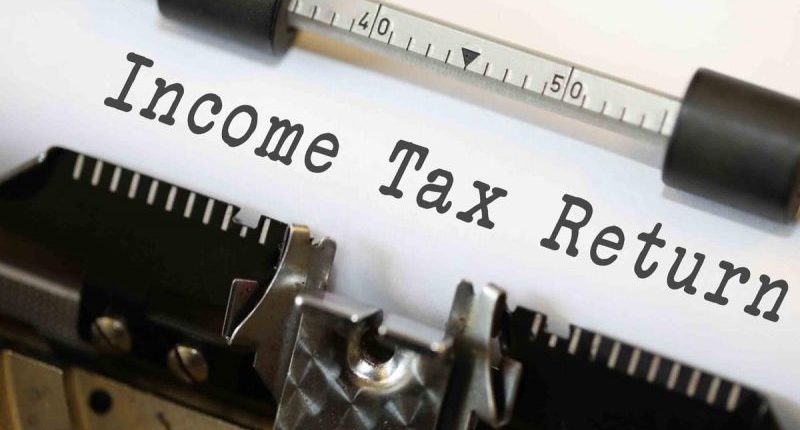The income tax return filing date, which is 30th September for the AY 2021-22 for individual taxpayers, is approaching soon.
Reviewing your Form 16 will not give you an idea of the actual tax liability, as it will not have any other income like capital gains income earned by you during the financial year. It would help if you remembered to report all your gains or losses from selling shares, mutual fund (MF) units, gold, or property.
Let us see how to calculate capital gains for different asset classes and how to disclose them in your income tax return.
Irrespective of the amount gained or lost, one must disclose capital gains or losses while filing Income Tax Return (ITR).
What is capital gain?
Capital gains are the profits earned from the transfer of the capital assets such as shares and stocks, bonds, mutual fund units, gold, property, etc.
The capital gains are of two types (depending on the period of holding of the capital asset by the current owner):
- Long term
- Short term
The Income Tax Act has specified different tenure for different classes of assets that we have discussed below.
Also, the capital gain is calculated as the value of sale consideration over the cost of the acquisition of the asset transferred. However, even these rules are different for various assets.
For better understanding, let us classify the assets into three categories:
- Immovable property
- Equity and equity-linked investments
- Other assets like gold, bonds, debt instruments, jewellery, liquid investments, etc.
Immovable property
The period of holding for capital gains for real estate property like land, house, apartment etc., is considered two years. This means if a property is sold after holding it for two years, it will be regarded as long-term capital gains, whereas if it is sold within a holding period of two years, it will be regarded as short-term capital gains. LTCG tax rate is 20% with indexation, while STCG is taxed at the individual’s slab rate.
Short-term capital gain (STCG)
= Full sale consideration – (Cost of transfer +Cost of acquisition + Cost of improvement).
Whereas the formula for calculating LTCG is:
Long-term capital gain (LTCG)
= Full sale consideration – (Cost of transfer +Indexed cost of acquisition + Indexed cost of improvement)
Firstly, to calculate LTCG, you should calculate the indexed cost of acquisition (COA). The formula for calculating it is as follows:
Indexed COA = Cost of acquisition x Notified cost inflation index (CII) for the year of sale/CII of the year of purchase)
Indexed cost of improvement = Cost of improvement x CII of the year of transfer/CII of the year of improvement.
However, it is to be noted that the base year for the Cost of Index calculation was revised to 2001-02 in Finance Act 2017. Hence, for assets bought before 2001, FMV as of 1st April 2001 is required to calculate the indexed cost of acquisition further.
For instance, if you bought a property in 1997, you first need to calculate the FMV of the property as of 1st April 2001 and then index the cost per the above-mentioned formula, considering 2001 as the base year for CII.
Also, with the revision of the base year of CII, the cost of improvement shall include only those capital expenditures incurred after 1.04.2001.
In the case of property received in an inheritance or as a gift, the previous owners’ cost of acquisition and holding period should be considered for calculating capital gains.
The LTCG tax on the property can be reduced by reinvesting the capital gains to purchase another residential property under Section 54 or purchase of a specified infrastructure bond under Section 54EC within the time prescribed.
Equity and equity-linked instruments:
The holding period for classification between short term and long term in equity or equity-oriented mutual funds is one year. Hence, if the equity stocks are sold within a year of purchase, it will be considered STCG, whereas transfer of these shares after a year is considered LTCG.
Tax on STCG for equity or equity-related instruments is at the rate of 15%. At the same time, LTCG is taxable at 10% on amounts exceeding Rs.1 lakh in a financial year. Surcharge and cess apply to these rates.
There is also a provision of grandfathering
CBDT has introduced a grandfathering clause for calculating the cost of acquisition for long-term capital gains to ensure that the tax is only prospective in nature. This was to make the gains from the date of announcement only taxable. Therefore, the acquisition cost must be calculated as per a specified formula to ensure investments made before February 1, 2018, remain tax-exempt. Grandfathering clause will protect your LTCG made up till 31 January. Only the gains made after that date will be taxed.
The cost of acquisition as per grandfathering clause is to be calculated as follows:
- Value I – Fair Market Value as of 31st Jan 2018 or the Actual Selling Price, whichever is lower
- Value II (COA) – Value I or Actual Purchase Price, whichever is higher
Other assets like gold, bonds, debt instruments, jewellery, liquid investments, etc.
The holding period for other assets like gold, bullion, jewellery, debt instruments, bonds etc., will be considered as three years (36 months). Any gain on the transfer of these assets within three years of holding will be considered short-term gains, and gains on more than three years of holding will be regarded as long-term gains. LTCG rate on these assets is 20% after indexation, whereas STCG is taxed as per income tax slabs.
Set-off and carry forward
A short-term capital loss can be set off against the STCG or LTCG of the same year. Also, it can be carried forward to subsequent financial years for set-off. However, long-term capital loss (LTCL) can be set off only against the LTCG and no other income.
Tax exemptions on capital gains
Section 54 of the Income Tax Act allows the taxpayer to claim capital gain tax exemption if the gain is fully utilised to purchase another house. The seller of the property can buy a new house within one year or two years after (three years in case of construction) from the date of sale of the previous property.
The taxpayer can claim exemption from the capital gain by investing in bonds issued by the National Highway Authority of India (NHAI) or Rural Electrification Corporation (REC) under Section 54EC. The maximum exemption that can be claimed under this section is Rs.50 lakh.
Also if the taxpayer needs time to buy the right property, then capital gain tax can be saved by depositing the gain amount in the Capital Gains Accounts Scheme (CGAS) of any notified public sector bank. This amount can then be claimed for tax exemption. However, you are required to invest this money within the specified time allowed under the section for availing of the exemption.
Agricultural land in rural areas, not within the specified limits of the city, is exempt from the capital gain tax.
Apart from these, other exemptions are available under section 54 to Section 54F, under which the taxpayer can claim exemption by further investing.
Disclosing gains in ITR
Once you have arrived at the capital gains or losses figure for the financial year, you will have to report it in your ITR forms.
Their income tax department has notified different ITR forms based on the type and amount of income.
Salaried individuals with capital gains income are required to file ITR-2, whereas individuals having business income can file ITR-3 if they also have capital gains income.
The taxpayers have to report the capital gain income under schedule CG in the ITR forms. The requirements to report the capital gain income are extensive and depend upon the type of asset sold and holding period, long term or short term.
In the case of immovable property, additional details like the PAN/ Aadhaar of the buyer, address and PIN code of the property are to be disclosed along with the sale, purchase, and transfer expenses.
In case of long-term gain on equity stocks, a separate schedule 112A needs to be filled, which requires scrip wise reporting. Details like share/unit acquired, ISIN code, number of shares/units, the full value of consideration, cost of acquisition, details of FMV as of 1.02.2018 for grandfather rule compliance, expenses of transfer, etc., is required to be filled.
Even if you claim full exemption of capital gains by investing in specified assets, it is to be reported fully in the ITR.
The income tax department has become vigilant and tracks all the transactions of the PAN holders. Non-reporting or under-reporting of such income can be easily tracked, resulting in penalty, fine or proceedings. If you are unsure how and where to disclose your capital gain income, you may consider taking the tax experts’ assistance to file your ITR.
For any clarifications/feedback on the topic, please contact the writer at jyoti.arora@cleartax.in

I am a Chartered Accountant by profession with 4+ years of experience in the finance domain. I consider myself as someone who yearns to explore the world through travelling & Reading. I believe, the knowledge & wisdom that reading gives has helped me shape my perspective towards life, career and relationships. I enjoy meeting new people & learning about their lives & backgrounds. My mantra is to find inspiration from everyday life & thrive to be better each day.




